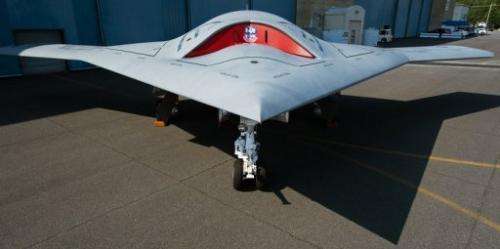Ban 'killer robots,' rights group urges

Hollywood-style robots able to shoot people without permission from their human handlers are a real possibility and must be banned before governments start deploying them, campaigners warned Monday.
The report "Losing Humanity"—issued by Human Rights Watch and Harvard Law School's International Human Rights Clinic—raised the alarm over the ethics of the looming technology.
Calling them "killer robots," the report urged "an international treaty that would absolutely prohibit the development, production, and use of fully autonomous weapons."
The US military already leads the way in military robots, notably the unmanned aircraft or drones used for surveillance or attacks over Pakistan, Afghanistan, Yemen and elsewhere. But these are controlled by human operators in ground bases and are not able to kill without authorization.
Fully autonomous robots that decide for themselves when to fire could be developed within 20 to 30 years, or "even sooner," the 50-page report said, adding that weapon systems that require little human intervention already exist.
Raytheon's Phalanx gun system, deployed on US Navy ships, can search for enemy fire and destroy incoming projectiles all by itself. The X47B is a plane-sized drone able to take off and land on aircraft carriers without a pilot and even refuel in the air.
Perhaps closest to the Terminator-type killing machine portrayed in Arnold Schwarzenegger's action films is a Samsung sentry robot already being used in South Korea, with the ability to spot unusual activity, talk to intruders and, when authorized by a human controller, shoot them.
Fully autonomous fighting machines would spare human troops from dangerous situations. The downside, though, is that robots would then be left to make nuanced decisions on their own, the most fraught being the need to distinguish between civilians and combatants in a war zone.
"A number of governments, including the United States, are very excited about moving in this direction, very excited about taking the soldier off the battlefield and putting machines on the battlefield and thereby lowering casualties," said Steve Goose, arms division director at Human Rights Watch.
While Goose said "killer robots" do not exist as yet, he warned of precursors and added that the best way to forestall an ethical nightmare is a "preemptive, comprehensive prohibition on the development or production of these systems."
Jody Williams, the 1997 Nobel Peace Prize laureate, said in Washington that the prospect of killer robots "totally freaked me out."
"I had visions of the Terminator," she said. "The thought that this development was proceeding without any public discussion I found more reprehensible than most military R&D because I really believe that this would... totally transform the face of warfare."
The problem with handing over decision-making power to even the most sophisticated robots is that there would be no clear way of making anyone answer for the inevitable mistakes, said Noel Sharkey, professor of robotics at University of Sheffield.
"If a robot goes wrong, who's accountable? It certainly won't be the robot," he said.
"The robot could take a bullet in its computer and go berserk. So there's no way of really determining who's accountable and that's very important for the laws of war."
(c) 2012 AFP



















